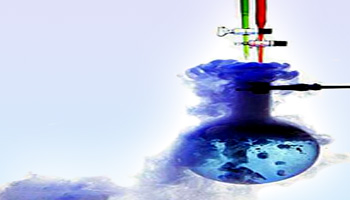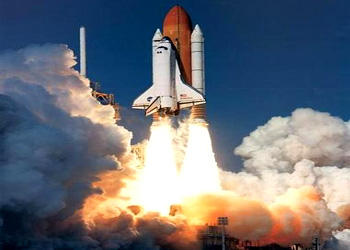
Chemical properties are the characteristic reactions of different substances in which chemical change occur. Breaking of bonds or making of new bonds take place during a reaction and as a result of this, new substances are formed. These reactions can either be exothermic or endothermic. Exothermic reactions are those in which energy is liberated with the formation of products whereas endothermic reactions require ample amount of energy to proceed in the forward direction. Below are the examples of some of the common chemical reactions:
 A rusted sculpture
The reaction is done under controlled conditions and does not change the physical integrity of the
sculpture.
A rusted sculpture
The reaction is done under controlled conditions and does not change the physical integrity of the
sculpture.
Rusting of metals:
When iron is reacted with oxygen in the presence of water and air, it forms iron oxide (commonly known as rust). It causes iron to
deteriorate and reduces its stability.
Acid–base reactions:
Acid and base react together and neutralize each others properties and produce a salt. For example when hydrochloric acid (an acid)
reacts with sodium hydroxide (a base), sodium chloride (common salt) is formed:
HCl + NaOH ⟶ NaCl
 Chemical rockets create their exhaust by the combustion of their propellants. These rockets store very high
amount of energy and, hence can be very dangerous.
Chemical rockets create their exhaust by the combustion of their propellants. These rockets store very high
amount of energy and, hence can be very dangerous.
Combustion reaction: Combustion is an exothermic reaction and always involves molecular oxygen. For example when wood burns in the presence of oxygen, lots of energy is released in the form of heat. The oxidation of food, a process called as cellular respiration, in the presence of oxygen is a type of combustion reaction in which along with carbon dioxide and water, energy is produced.

Chemical reactions occur at a considerable rate. Some compounds react with each other immediately but others may take many years to react. Rate of reactions can be increased dramatically by using the suitable catalysts. Some compounds do not react with each other, i.e., when these compounds are mixed together no precipitation is formed, no effervescence occur, and there is no change in the color or odor of the mixture.
The smell of rotten eggs (due to production of hydrogen sulfide gas), the ripening of fruits, the change in the color of the leaves during fall, bubbling in the solution of carbon dioxide and limestone etc. are the few chemical reactions we observe in our day to day life. Several reactions are taking place inside and outside the living world every second. From dyes to drugs, food to fabric, every industry utilizes the chemicals in order to produce new compounds of commercial use.